
Полная версия
Cool Camping

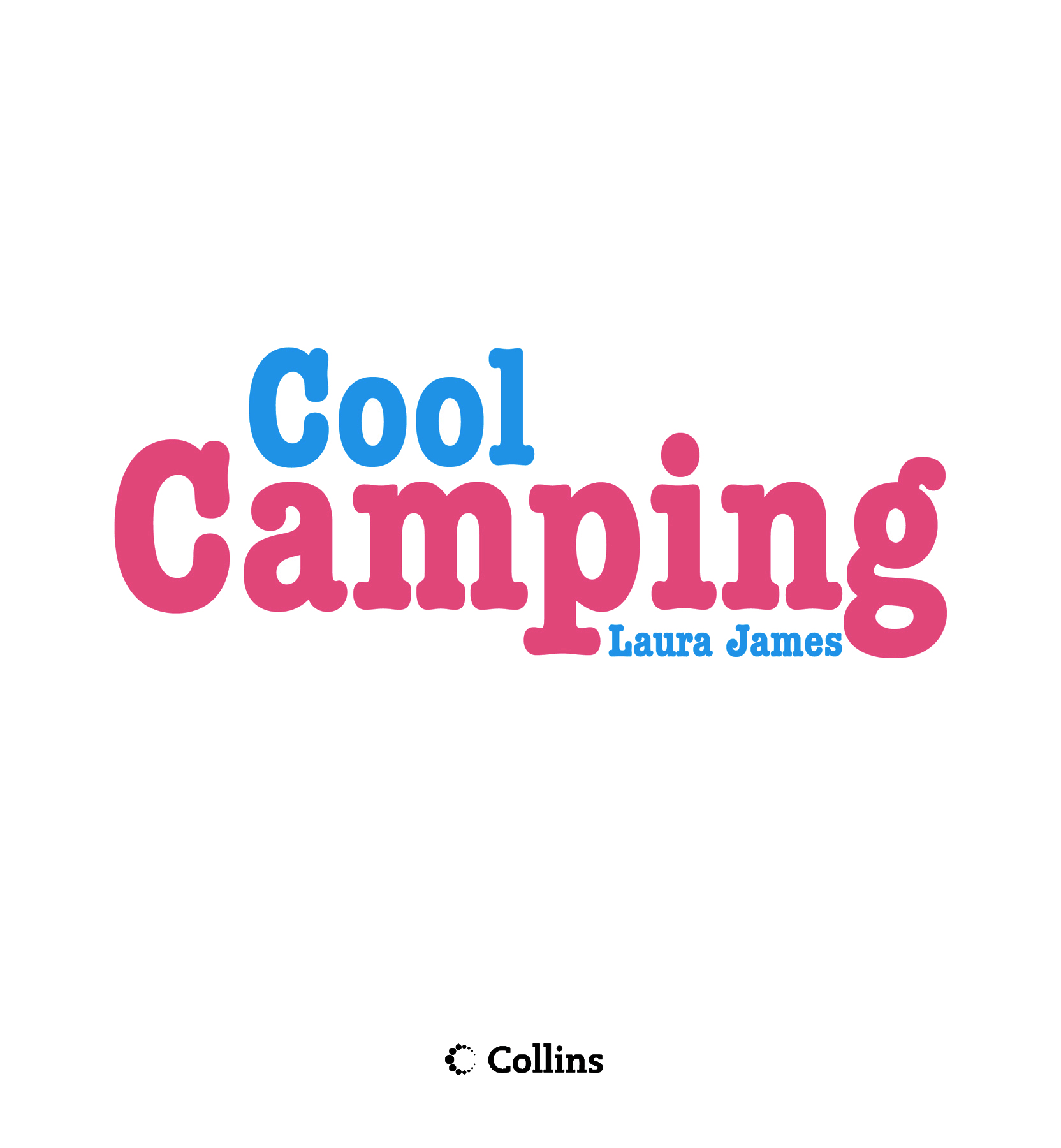
Copyright

First published in 2006 by Collins, an imprint of
HarperCollins Publishers
1 London Bridge Street
London SE1 9GF
www.collins.co.uk
Collins is a registered trademark of HarperCollins Publishers Limited
Text © Laura James, 2006
For HarperCollins
Senior Commissioning Editor: Jenny Heller
Editor: Lisa John
Senior Production Controller: Chris Gurney
This book was designed and produced for HarperCollins by
The Mabel Gray Company
Researcher: Zofia Falvey
Laura James hereby asserts her moral right to be identified as the author of this work.
All rights reserved under International and Pan-American Copyright Conventions. By payment of the required fees, you have been granted the nonexclusive, non-transferable right to access and read the text of this e-book on screen. No part of this text may be reproduced, transmitted, downloaded, decompiled, reverse engineered, or stored in or introduced into any information storage retrieval system, in any form or by any means, whether electronic or mechanical, now known or hereinafter invented, without the express written permission of HarperCollins e-books.
Source ISBN 9780007230556
Ebook Edition © APRIL 2019 ISBN: 9780007547463
Version: 2019–02–27
HarperCollinsPublishers has made every reasonable effort to ensure that any picture content and written content in this ebook has been included or removed in accordance with the contractual and technological constraints in operation at the time of publication.
Note to Readers
This ebook contains the following accessibility features which, if supported by your device, can be accessed via your ereader/accessibility settings:
Change of font size and line height
Change of background and font colours
Change of font
Change justification
Text to speech
Page numbers taken from the following print edition: ISBN 9780007230556

Picture credit: American Caravans Ltd

Picture credit: Tipi.co.uk
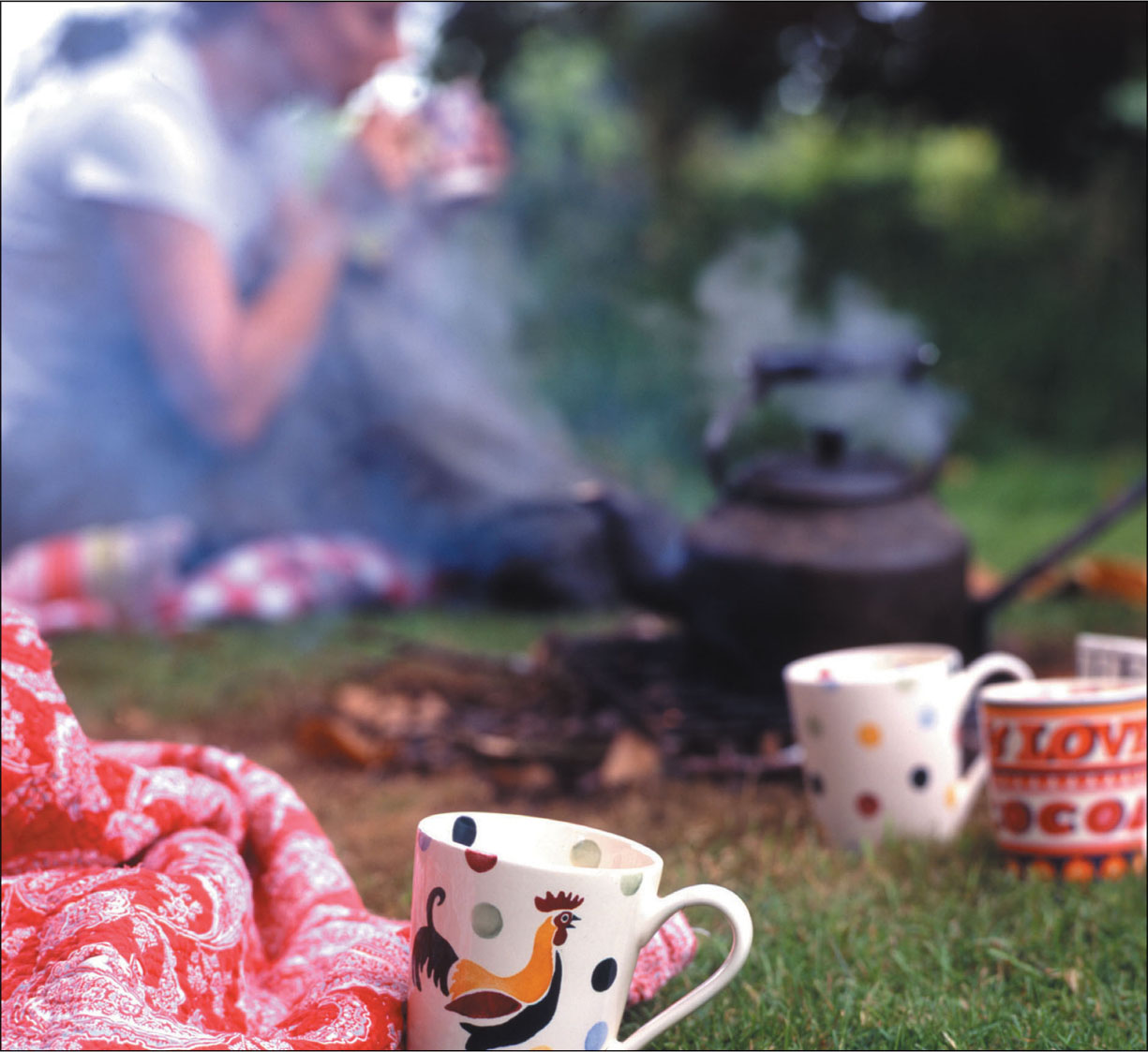
Picture credit: Emma Bridgewater
Contents
Cover
Title Page
Copyright
Note to Readers
Introduction
Why camping is cool
Essentials
Tents
Tipis
Yurts
Bolt-holes
Kit guide
Out there
Etiquette
Campfires
Ghost stories
Campfire songs
Campfire games
Campfire food
Indian Lamb Skewers
Indian-spiced Lamburgers
Vegetable Bean Soup
Sausages with Spicy Tomato Lentils
Scotch Broth
Shellfish with Roasted Garlic and Thyme
Charred Prawns with Indian Spices
Grilled Marinated Red Mullet
Marlin with Thyme Leaf
Herb-smoked Lobster
Chicken and Prawn Gumbo
One-Pot Noodles
Breakfast Fried Rice
Hot Chocolate
Baked Banana
Camp Treat
Smores
Style
Fashion
Beauty
Accessories
Bedtime
Great escape
Love and romances
With friends
At festivals
With kids
Garden camping
Listings
Style
Destinations
Festivals
Equipment
Acknowledgements
About the Author
About the Publisher

Martin Miller
Kevin McCloud
Alex James
Emma Bridgewater
Hugh Fearnley-Whittingstall
Lucy Young
Wilfred Emmanuel-Jones
Mitchell Tonks
Tom Norrington-Davies
Raffaella Barker
Jodie Kidd
Alice Temperley
William Higham
Emily Eavis
Kim Wilde

Picture credit: Garden Trading
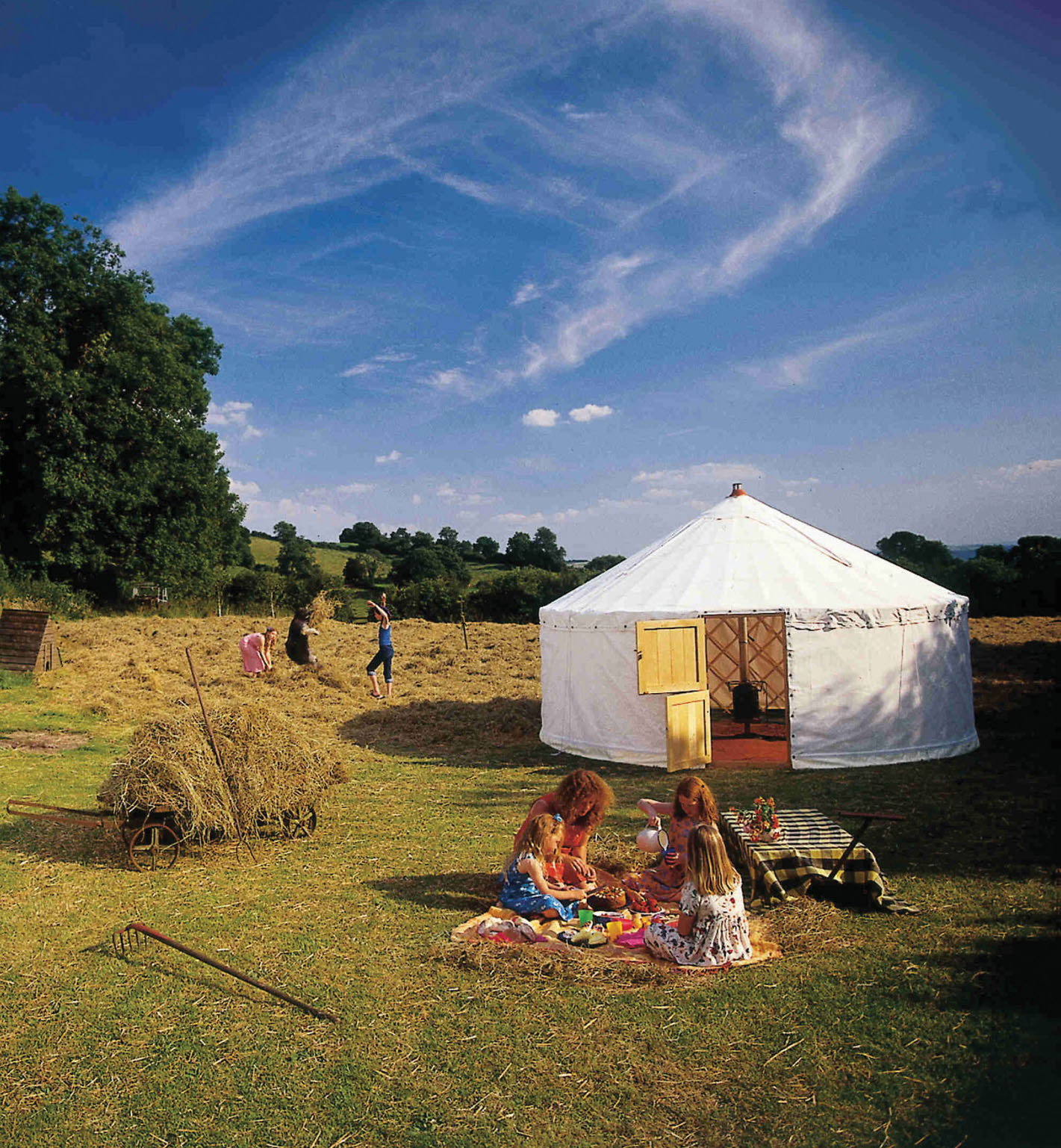
Picture credit: Bruton Yurts
intro
whycampingiscool
It’s fun, fashionable and easy to do with great style. It offers an unparalleled sense of freedom and allows you to let your imagination run wild.
Camping is officially cool again. But before you start having nightmares about being trapped in a field with a bus-load of boy scouts, let me explain. Camping has changed a lot. Gone are the days of being stuck next to the couple from hell who can’t wait to get you under their awning so they can subject you to two hours of mind-numbing conversation about double-entry book keeping.
Today it’s about style, comfort and a sprinkling of glamour. Think Kate Moss at Glastonbury, Airstreams and T@b caravans. Drift off into a fantasy of vintage VW campers, bright white tipis stretching skywards and pretty tents peppered with flowers. Arguably, it was Cath Kidston’s delicious floral tent which kicked off the latest camping craze.
Imagine sitting round the campfire, eating delicious food and telling ghost stories. Think boys in feather headdresses and girls with fairy wings. This is today’s camping experience.
Cool camping is also about congregating around the campfire to share stories, sing songs, cook supper, toast marshmallows, or to simply enjoy the hypnotic effect of staring into the flames.
I didn’t always think like this; the first time I went camping I lasted precisely two-and-a-half hours before booking into the nearest hotel. I wrote the whole thing off as a hideous, never-to-be-repeated experience and refused even to think about it.
Then one evening at dinner the conversation turned to camping and, listening to the stories around the table, I realised that the reason I hated camping was because I had been doing it all wrong.
Used to my creature comforts, I had imagined that camping should be an experience of deprivation and that – a little like an endurance test – it was something one simply, well, endured. The thrill of camping, I’d thought, was in living to tell the tale. A few months later I decided to try again. This time, though, I aimed to make it a luxury experience and set about truly thinking of my tent as a home from home.
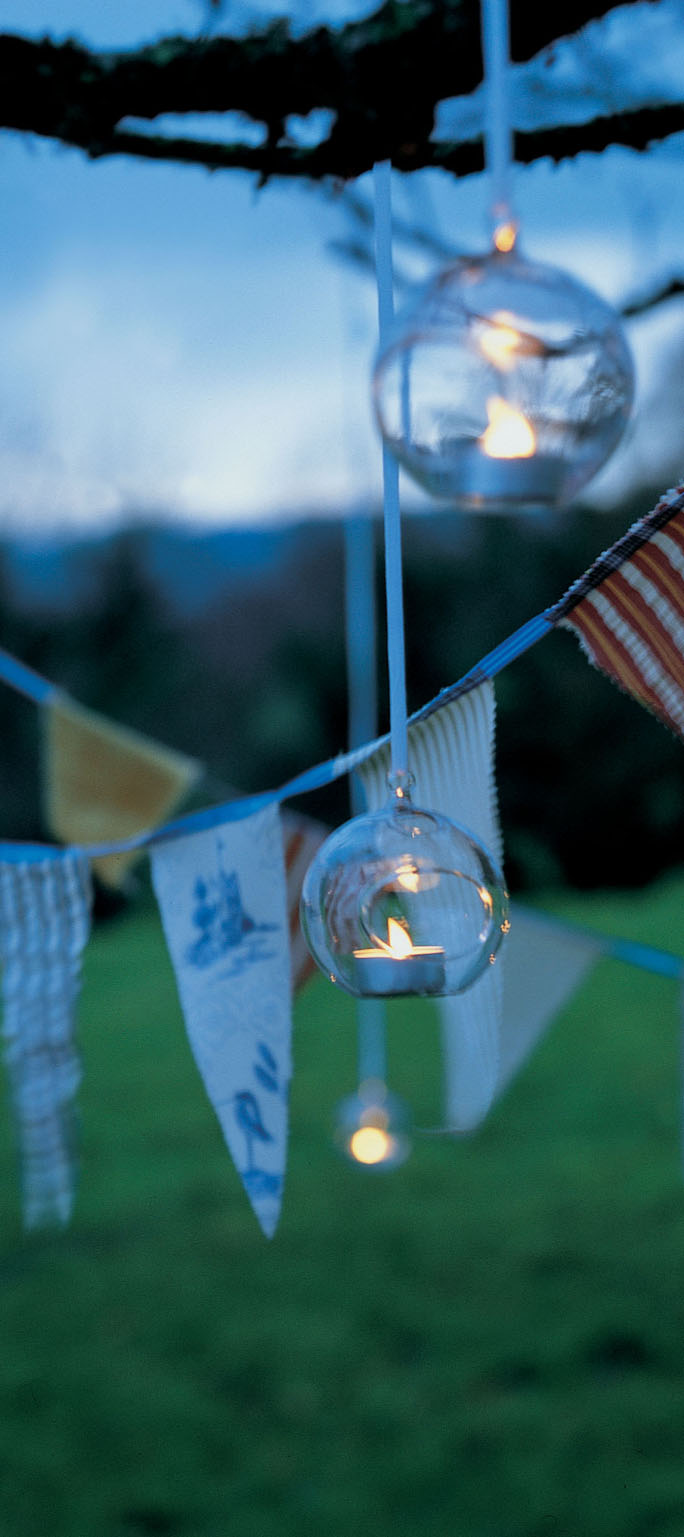
Picture credit: Fired Earth
Rather than settling for a standard, modern nylon model, I chose a tipi instead. From the moment I stepped inside, the experience was completely different. A compulsive nester at home, I made sure that I had lots of comforting things with me and sleeping in my tent this time was a truly magical experience. There are, of course, many different types of camping and many different reasons for doing it. Maybe you’re so in love that the idea of the two of you being entirely cut off from the word in a field all alone under the stars is the motivation that will fuel your trip.
Perhaps you and a crowd of friends are looking for a cheap fun break, or maybe you have small children and can’t face the idea of a long-haul flight and a stuffy hotel, or are off to a festival. Whatever the reason, you couldn’t have picked a better time as camping’s never been so cool.
Camping is a brilliant way to recharge your batteries and escape from modern life. It’s a back-to-nature experience that allows you to forget about the phone and email, to be utterly free to do what you want and to enjoy the elements. One of the real thrills of camping is the act of setting up camp itself. Of making your space beautiful and taking some time off from your life. It should be an experience that appeals to all your senses and one that makes you feel truly alive. When you’re camping, you tend to spend a lot of time thinking about what you’re going to eat and drink next. What the weather’s going to do and how you’d never noticed before how dark it really is at night.
What you don’t do is worry about real life and that, I suppose, is one of the real joys of camping. It allows you to experience things you haven’t since childhood. The day stretches before you in a way that’s unusual even on other kinds of holidays.
For children, camping is sheer bliss. In a world in which they’re forced to grow up far too quickly, camping holidays offer them an utterly childlike adventure. And, like many grown-ups, they love the kit associated with camping.
There are so many different adventures to be had. From doing it alone – in a one-man hike tent, somewhere utterly remote – to camping in a tipi field full of people, each one is different. But the thrill of spending nights outside is the same however you do it.
This book is not designed to be an instruction manual; it’s more a celebration of the art of camping. After all, sleeping outdoors under canvas is one of the few truly childish pleasures afforded to grown-ups and it’s not often that one gets to play ‘house’ any more.
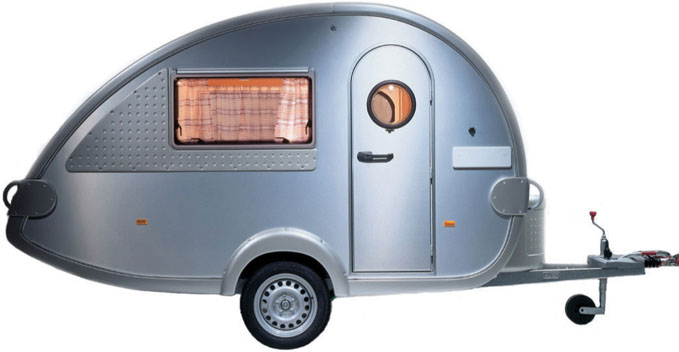
Picture credit: Swiftsilver Caravans
Camping is a brilliant way to recharge your batteries and escape from modern life… forget about the phone and email, to be utterly free to do what you want and to enjoy the elements
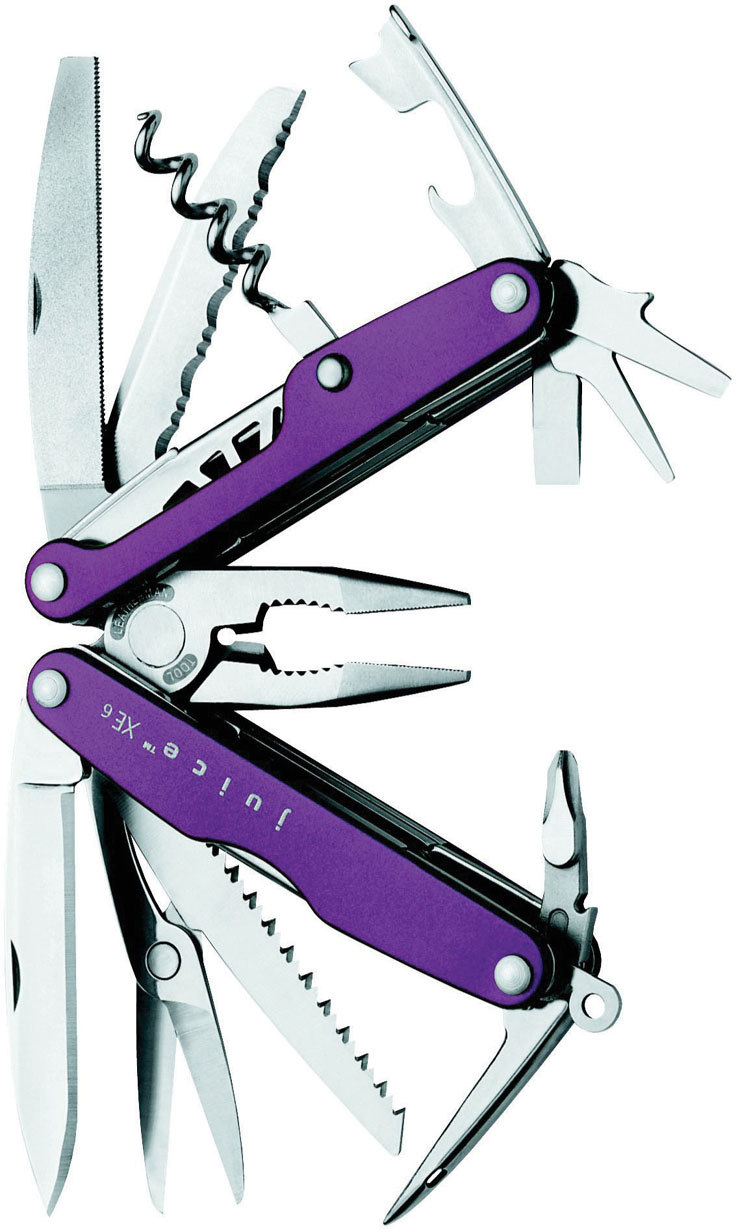
Picture credit: Leatherman
essentials
Having the right kit is vitally important to your camping trip. Without it you might be cold, miserable and, perhaps worst of all, the least stylish in the field. So, don’t leave home without planning ahead and deciding exactly what you need to take.
tents
tipis
yurts
bolt-holes
kit guide
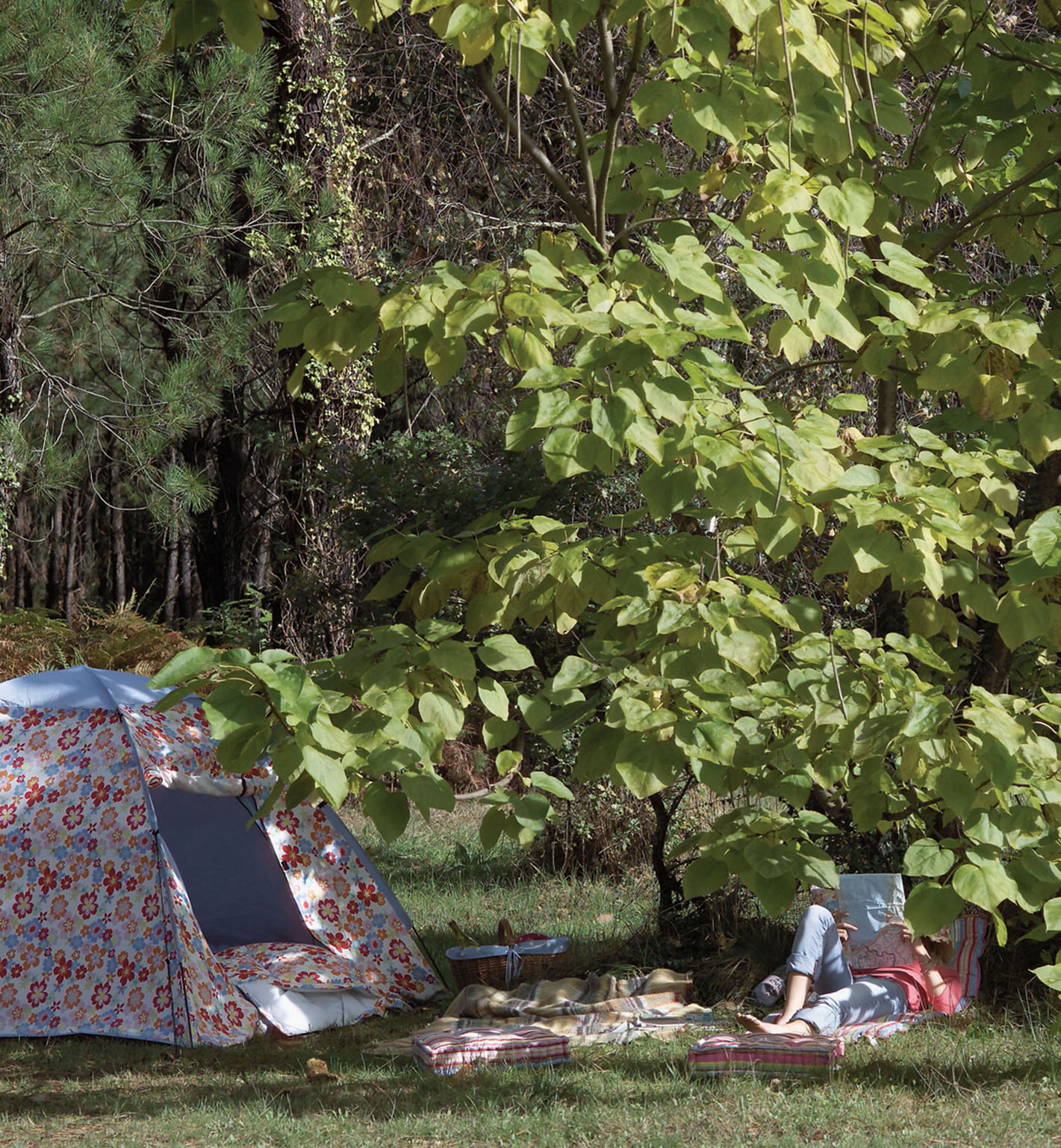
Picture credit: Pia Tryde with kind permission of Cath Kidston and Millets
essentials tents
loitering within tent
Technology and design have moved on massively and leaky, cold tents are a thing of the past. Tents are now pretty cool places in which to hang out.
Tents come in all shapes and sizes, from the very small and inexpensive to luxury versions with multiple bedrooms and space for everything, including the kitchen sink. Tents offer a compact and cost-effective means of camping. It’s important, though, that you choose a tent that best serves your needs and that you put it up properly. The weather can change really quickly and you need to ensure your tent offers you proper protection and will withstand the elements.
With tents, as with many things in life, you get what you pay for. Having said that, it makes no sense to spend a fortune on a tent if you’re not sure if you’re going to like camping. Larger camping shops have a good selection and staff who will be able to advise on the right tent for you. Whichever tent you go for, it’s a good idea to practice putting it up at home before you take it away for the first time. Manufacturers’ instructions can be a bit of a nightmare to follow and forget about trying to put it up for the first time on site and in the dark or bad weather.
Second-hand tents can be a good idea if you’re on a tight budget or are unsure if you’ll enjoy camping. Local papers, eBay and army surplus stores are good places to hunt out bargains. If you can get hold of an old-fashioned Scouts or army tent made from proper canvas, then you’ll have loads of space.
When you get to a temporary oasis, choose where you think you want to pitch your tent and sit on the grass for ten minutes. This is a useful exercise as it ensures it is indeed a good place to camp. Lie on the grass, too, and make sure it’s flat, even and comfortable.
The next step is to pitch your tent. If you’re a girl alone, you can always stand there batting your eyelashes and allow a knight in shining armour to do it for you. Whatever your tent looks like on the outside, you can make it gorgeous on the inside.
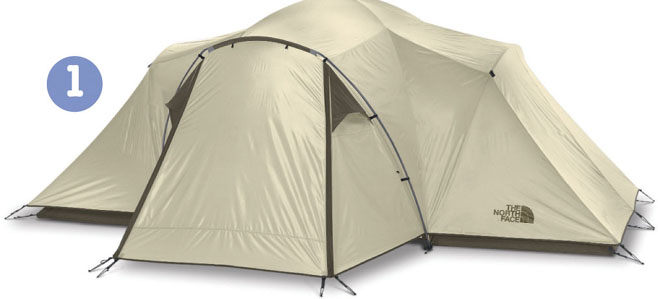
Picture credit: The North Face
The most important thing is comfort. As soon as your tent is pitched, decide what is going to go where and keep it meticulously tidy. If everything’s in its place, you won’t end up trying to find your torch in the pitch black or rolling over to find yourself putting your head on a pile of plates.
It’s best to decide where your bed is going to be positioned first. I can cope with anything as long as I have a good night’s sleep. But, if deprived of my full eight hours, even in the wilderness, I become impossible. Make sure you think about which way you want to face while sleeping. I like to have my feet facing the door, although at festivals it’s quite popular to sleep with your head close to the door, so you can chat to your neighbours. Make your bed and pile on the pillows.
Next, choose your kitchen area, somewhere for clothes and somewhere for the important things including the torch, matches and corkscrew, books and chocolate. I think this is important regardless of the size of the tent.
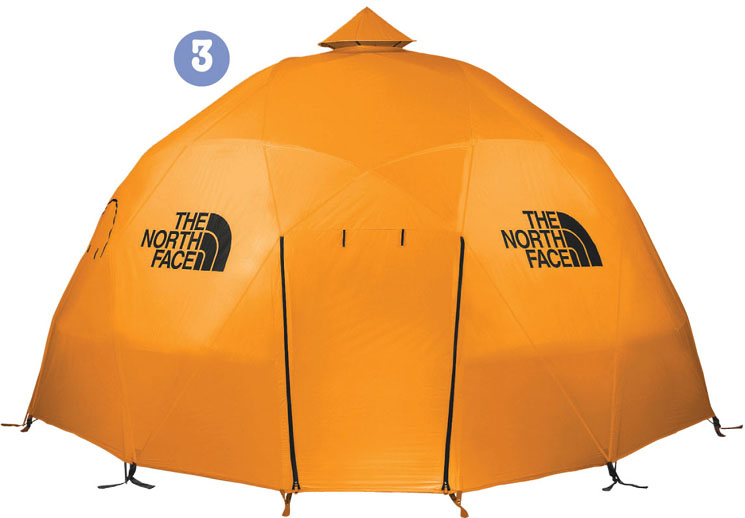
Picture credit: The North Face
Luxuries are an important part of tent life. Rugs are a must, for me at least. They can be heavy, though, so tricky if you’re hiking. Groundsheets have a horribly crackly, utilitarian feel and walking on rugs is much more comfortable. They also help to keep the tent warm at night.
It’s also vital to get the lighting right. Bright fluorescent torches are OK for walking to the loo at night, but in your tent you’ll want an altogether softer light. Gas lamps are good for this, as are the lanterns that take tea-lights, but obviously take care to avoid any fire hazards.
Most campsites allow you to have a sleeping tent and a pup tent on your pitch. These are usually very small tents, but can be useful for storage.
If you’re going camping with older children, they tend to love sleeping in their own tents. As long as it’s safe I think this should be strongly encouraged. It makes it more of an adventure for them and more peaceful for you.

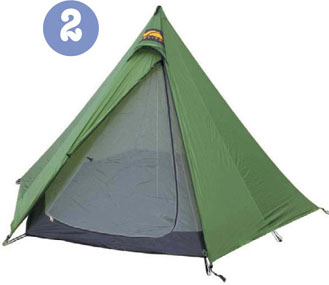
Picture credit: The North Face
Buy the best you can
Buy the best tent you can afford and never buy a tent without first having seen it up.
Hot advice…
If you’re camping somewhere you’re likely to get chilly, then line the base of your tent with a metallic safety blanket. Shiny side up, it’ll reflect your body heat back into the tent.
Look for funky colours
Tents are often made in rather uninspiring colours, but you can hunt out some pretty ones. Cath Kidston makes gorgeous patterned ones for Millets.
The joy of text
If you’re camping at a large campsite or festival, it’s a good idea to put a flag on your tent. Orange developed a tent that lit up when you sent it a text message. Sadly, so far no one has made it commercially.
Make it your own
If you want to customise your tent make sure you do it safely. Paint and hangings can damage the waterproofing. A helium balloon flying from the top is always rather sweet, as is bunting.
Be prepared
Check the weight of the tent before you buy it. If you’re travelling by car and can park right next to your pitch it’s not an issue. If you’re hiking up a large hill it most definitely is.
Keep bedding dry
Store your bedding in a bin bag to ensure that it doesn’t get wet when you’re making camp. There are few things as depressing as being out all day only to find yourself sleeping in a soggy bed when it’s time to turn in.

Frame
These are the most like a house. They’re large and you can walk around freely as there’s enough headroom. Usually they have a number of separate rooms.
Vis-a-vis

This means the tent has a bedroom at each side of the living area.
Pyramid

These are triangular in shape and are easy to erect because they have a central pole.
Ridge
Traditional triangular tents, which are sturdy and offer a lot of headroom. Their weakness is that the sides are unsupported.
Lightweight/dome
The most suitable tents for backpackers as they’re compact and aren’t heavy. Dome tents come in larger sizes for families or those who want to camp in a crowd.
Geodesic

These tents are similar to the dome variety, but because they have a different pole configuration they’re sturdier in high winds.
Hoop

These are like a cross between a ridge tent and a dome tent. They’re lightweight, spacious and are good in windy conditions.
Inflatables
An ingenious invention, as you don’t have to go through the palaver of erecting the tent, you simply blow it up with a foot pump.
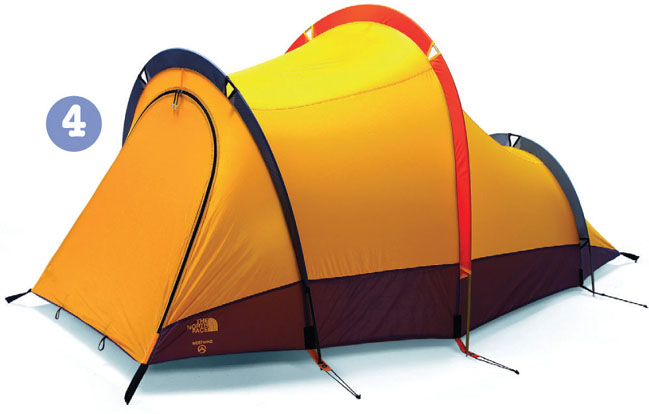
Picture credit: The North Face
essentials tipis
tipi or not tipi?
Everyone should sleep in a tipi at least once. Their combination of elegance and practicality, and the way they allow one to gaze at the stars at night, make them truly romantic and my favourite camping structure.
The magic of sleeping in a tipi is almost indescribable. Watching the stars through the open smoke flaps, while lying next to a roaring fire, is a wonderful experience. The tipi is probably the most elegant and graceful of all temporary structures and its beauty lies in its simplicity.
Phil Royle, from tipi.co.uk, who made my tipi, sums it up brilliantly. “Take twelve sticks, tie them together, wrap the canvas around, secure with more sticks and hang the lining. This is the recipe for a wonderful living space.
“Tipis are cool in the summer and in the winter, all you need to do is light a fire and you’ll be perfectly cosy.“
Tipis are available in various sizes. Mine is 16ft in diameter and sleeps six adults comfortably. One of the joys of a tipi is that it’s made from proper canvas, so smells delicious when new. It also takes on the gorgeous scent of wood smoke.
Most tipis are made from canvas that is waterproof and rot-proof. You can also usually pay extra to have your canvas fire-proofed as well.
How you floor your tipi is a matter of choice. Many like the natural look, but others prefer coir matting or tons of rugs over a plastic groundsheet. I like to do half-and-half and have the back of the tipi (where we sleep) covered and the front (where we eat, play games and generally hang out) left bare.
Tipis offer a flexible space that you can easily style to reflect your personality. This applies to the outside, too. Many tipi makers offer colour canvas options. My tipi is mainly white, but has pink smoke flaps, which look lovely.
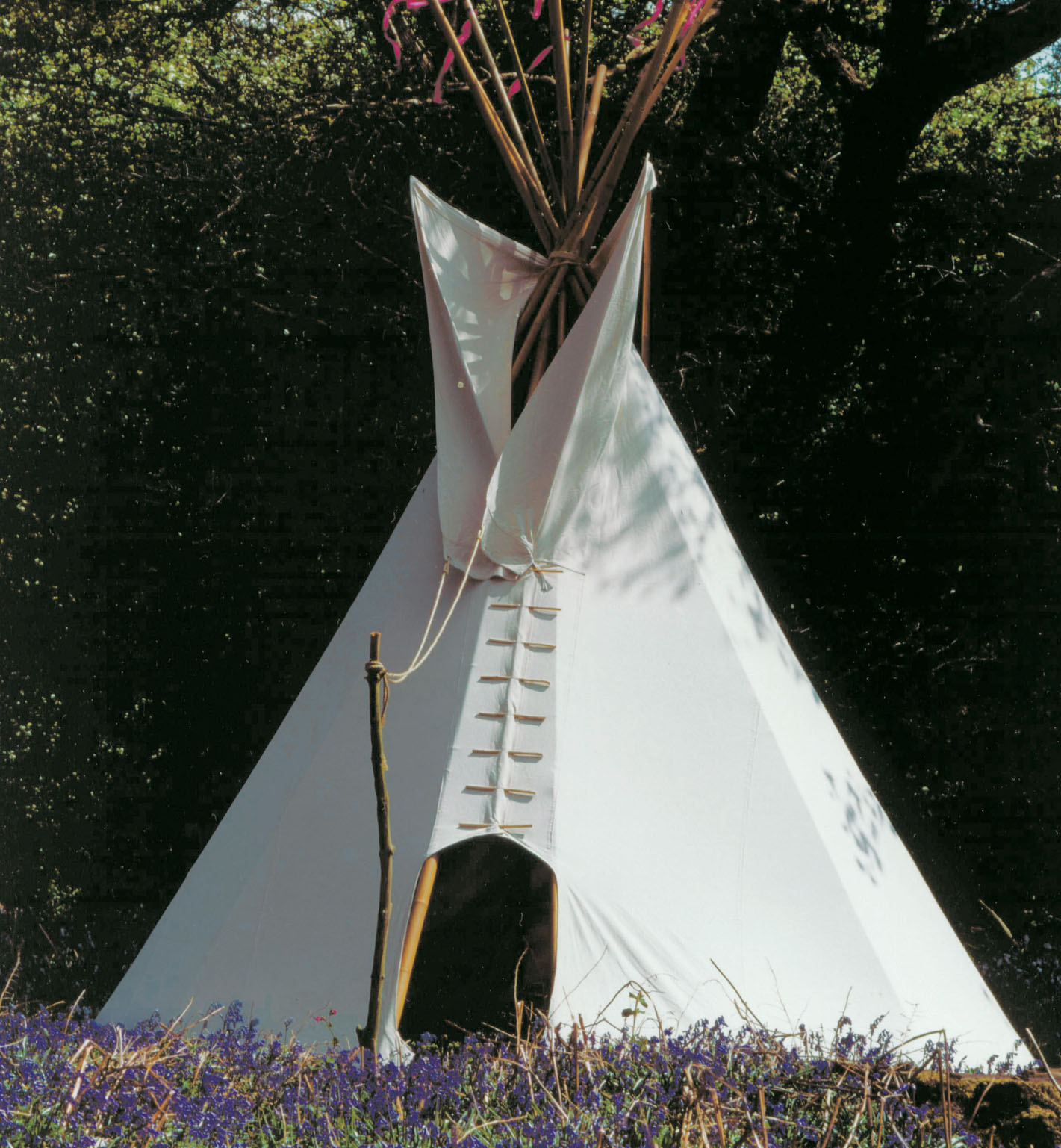
Picture credit: The Tipi Company
One of the great advantages of a tipi, is that you can have a fire in it. If you don’t want to light one directly on the ground, you can have a wood-burning stove, a fire bowl or a cast-iron chiminea. Drifting off to sleep in a tipi, while the fire crackles, is an intensely relaxing experience.
The shape of the tipi, as well as being practical, has spiritual significance. According to Greg Bramford, from The Tipi Company, “traditionally the tipi was a temple as well as a home. The floor of the tipi represented the earth on which we live, the walls the sky, and the poles the trails from earth to the spirit world, the links between man and the great mystery”.
There are a number of places where you can go and camp in a tipi. Many are included in the listings section. Also, there are companies who hire out tipis and will erect them at a site of your choosing. This can be a campsite, field or festival.


